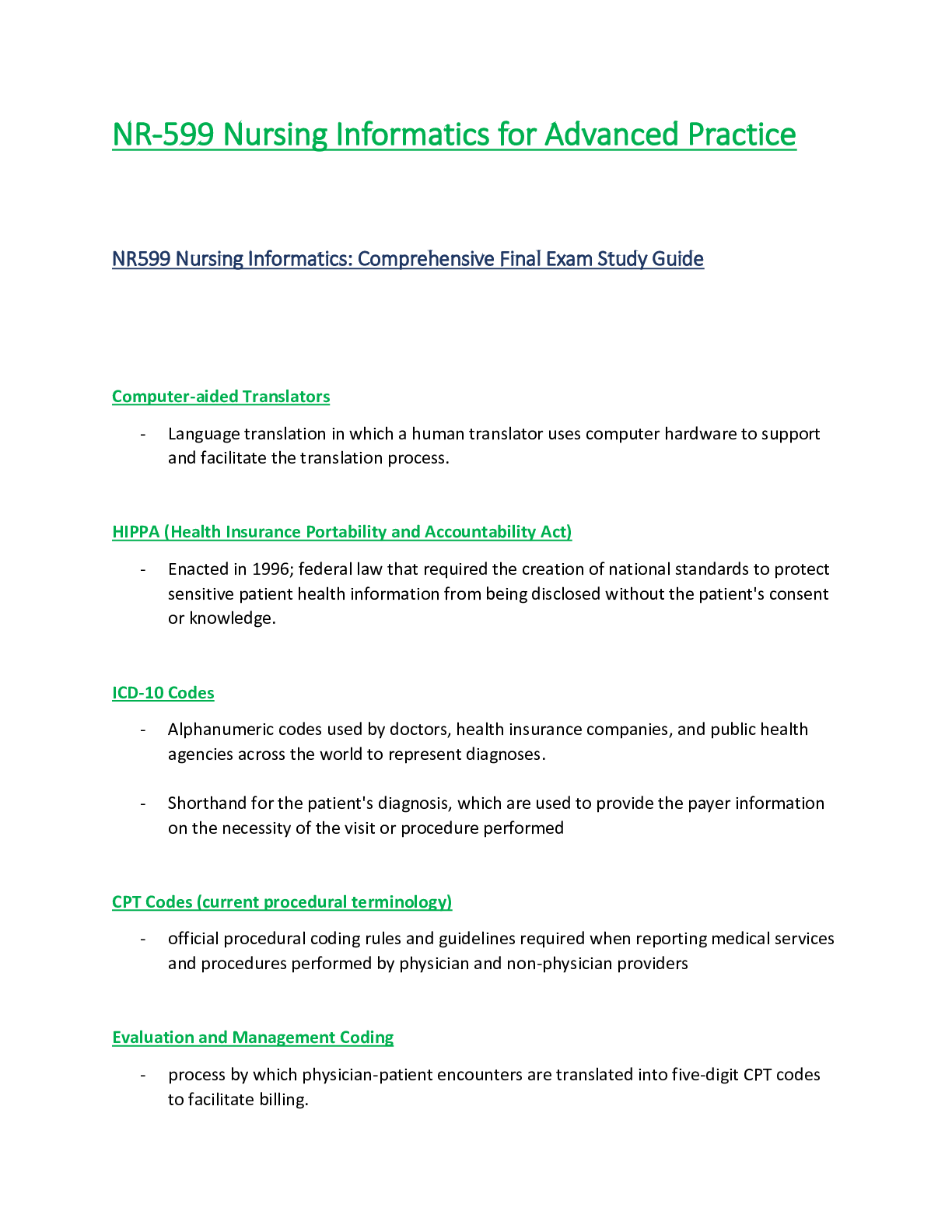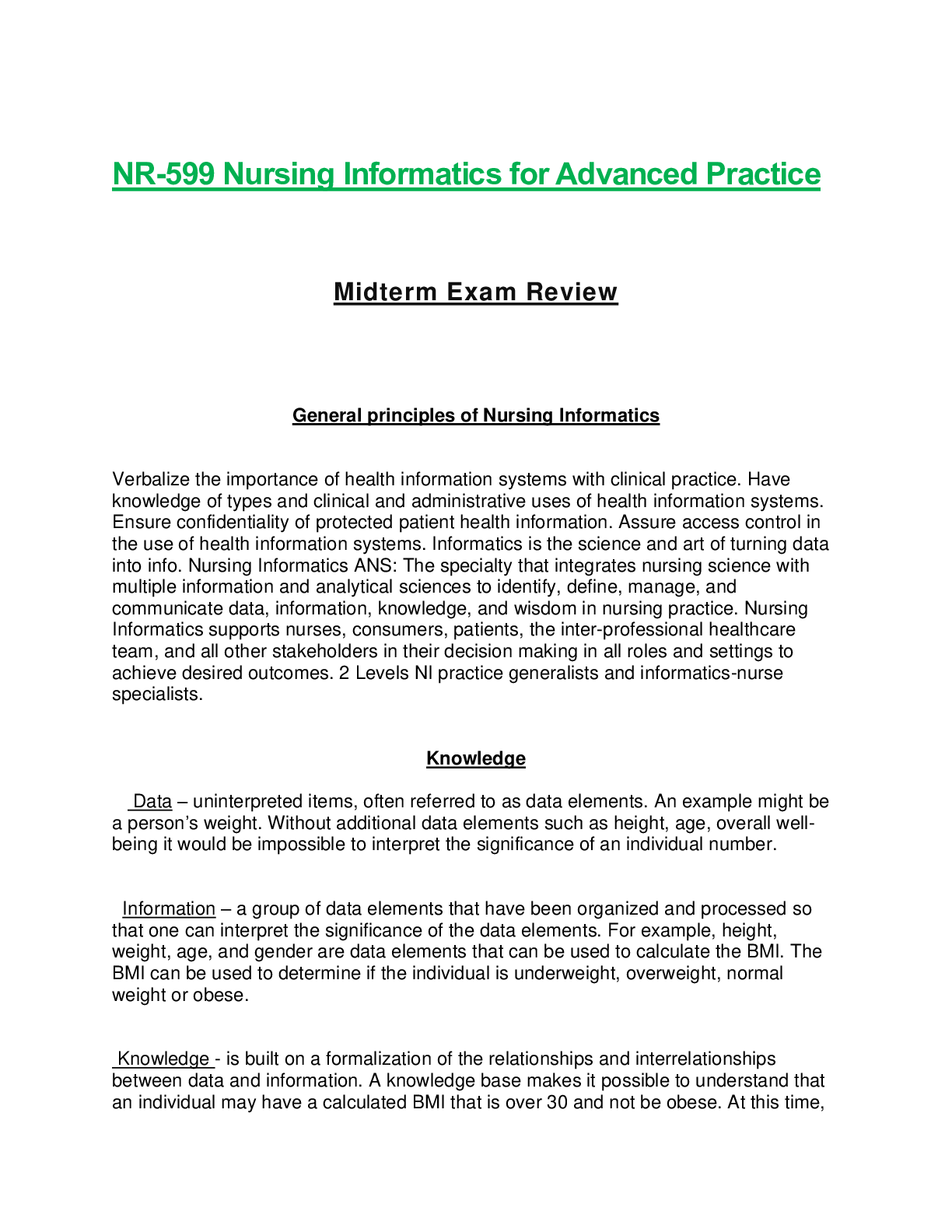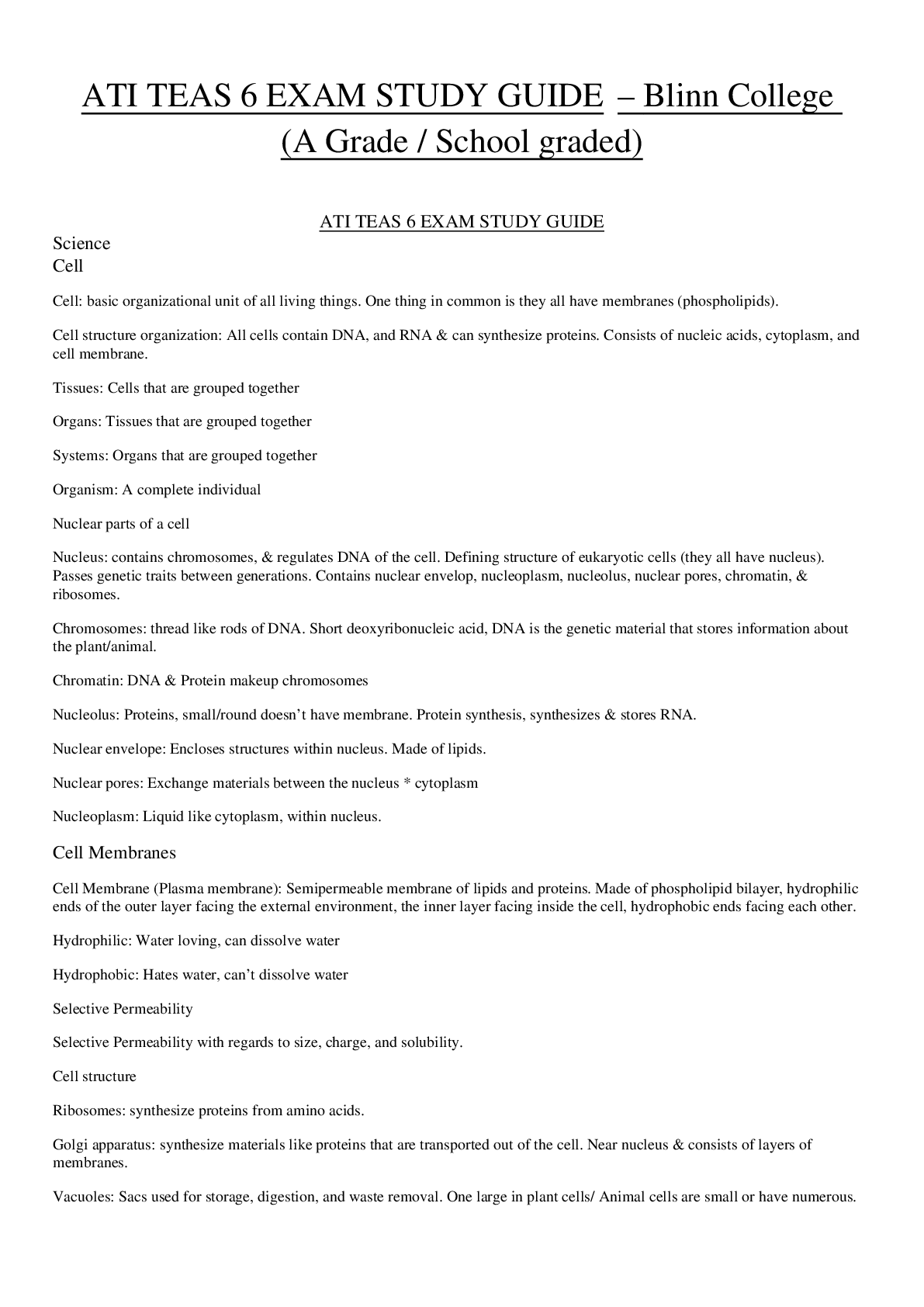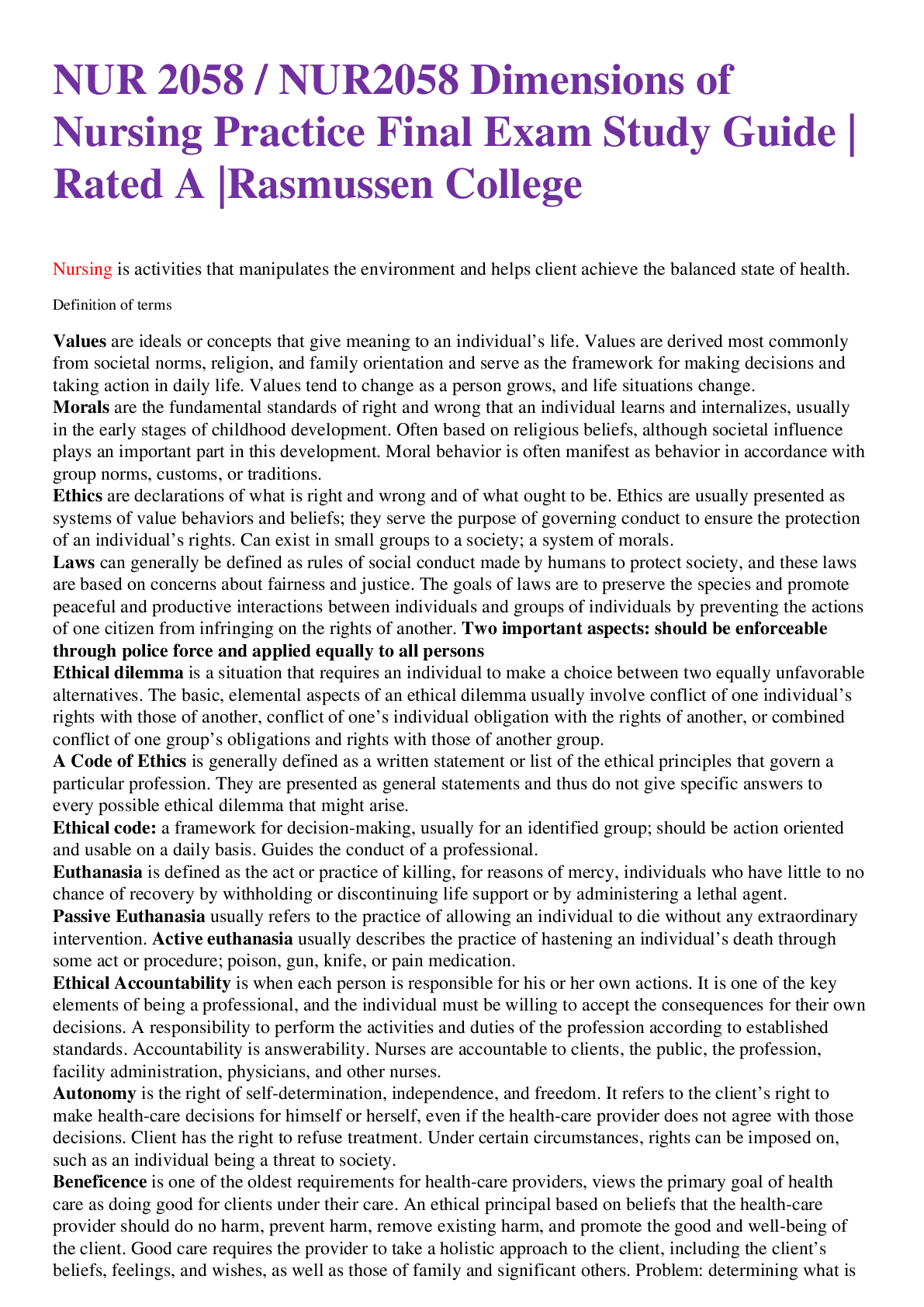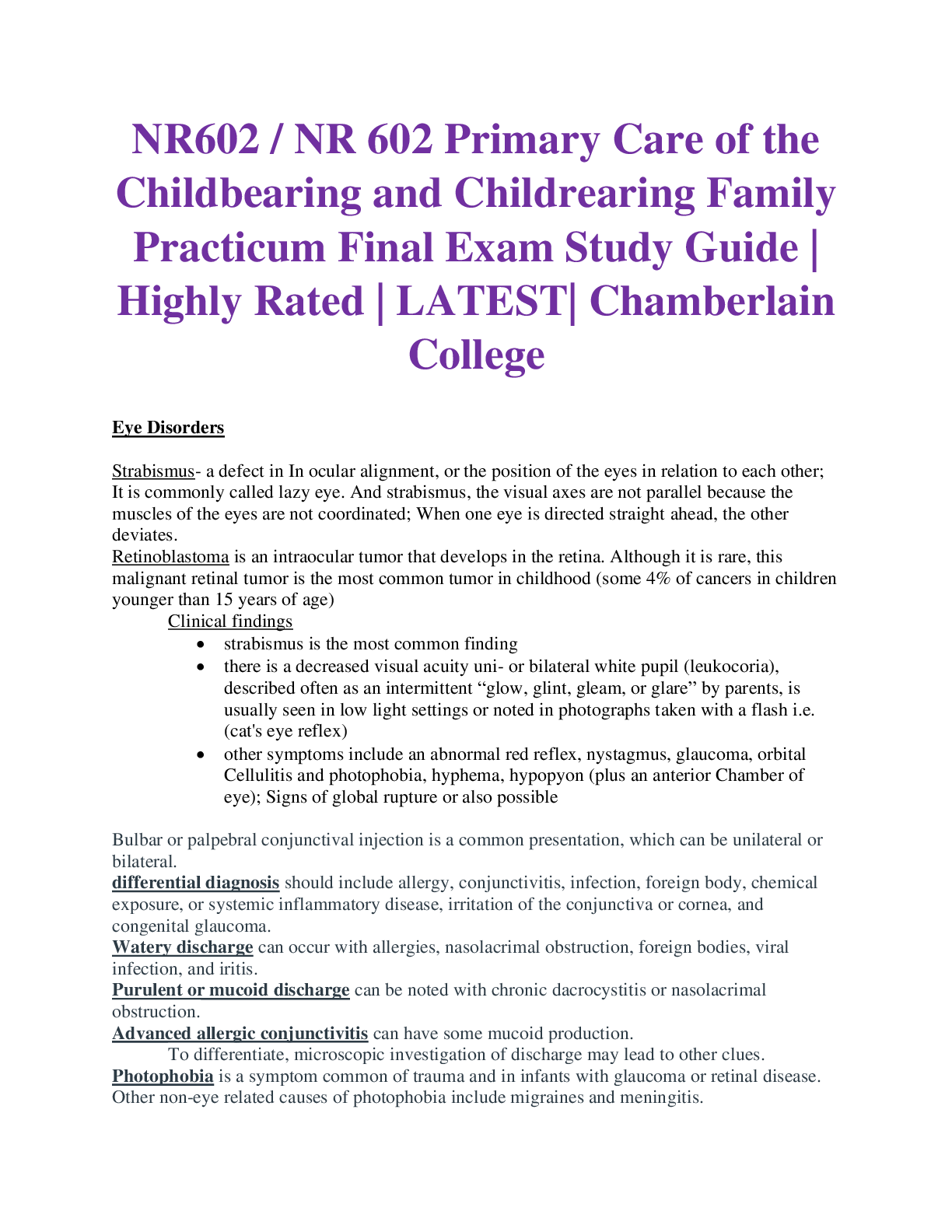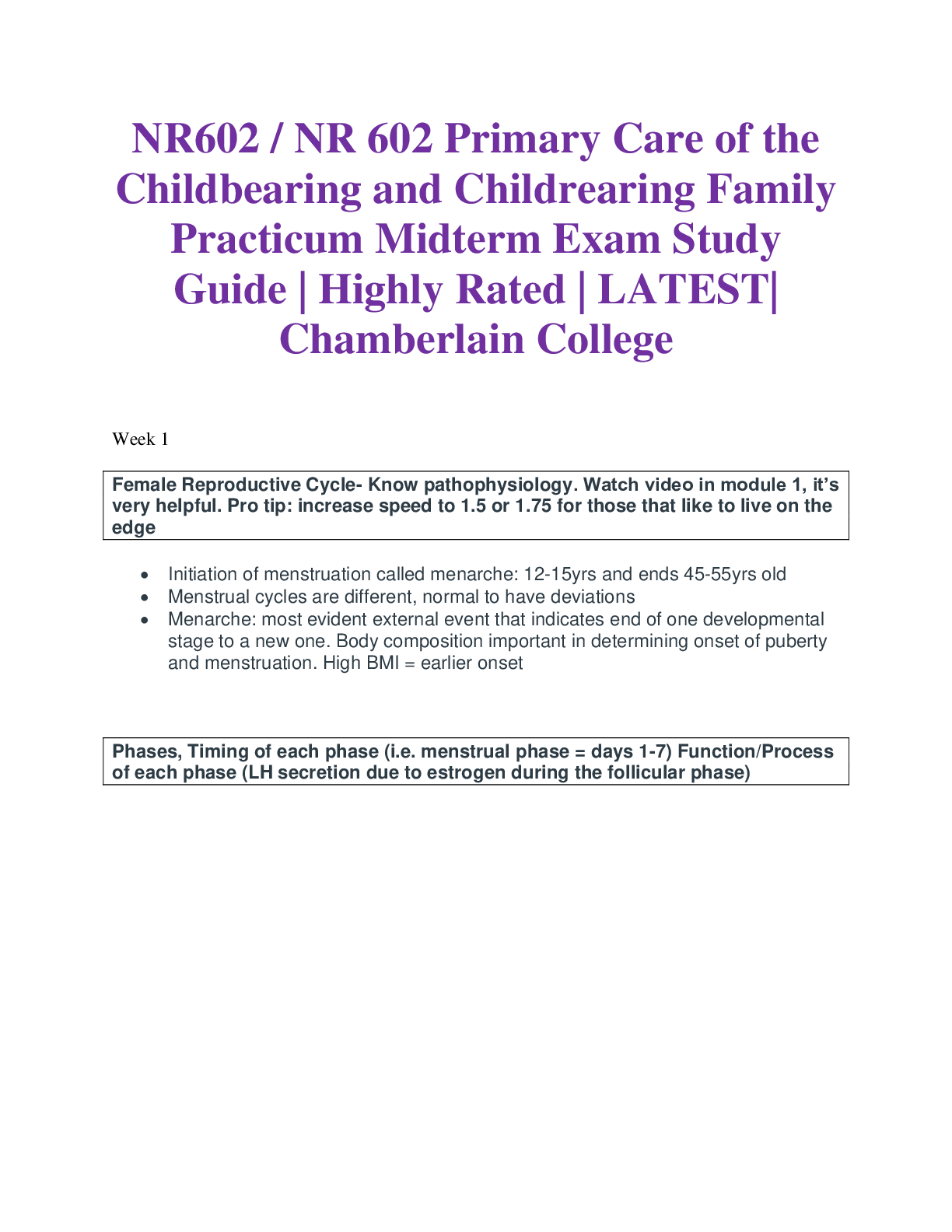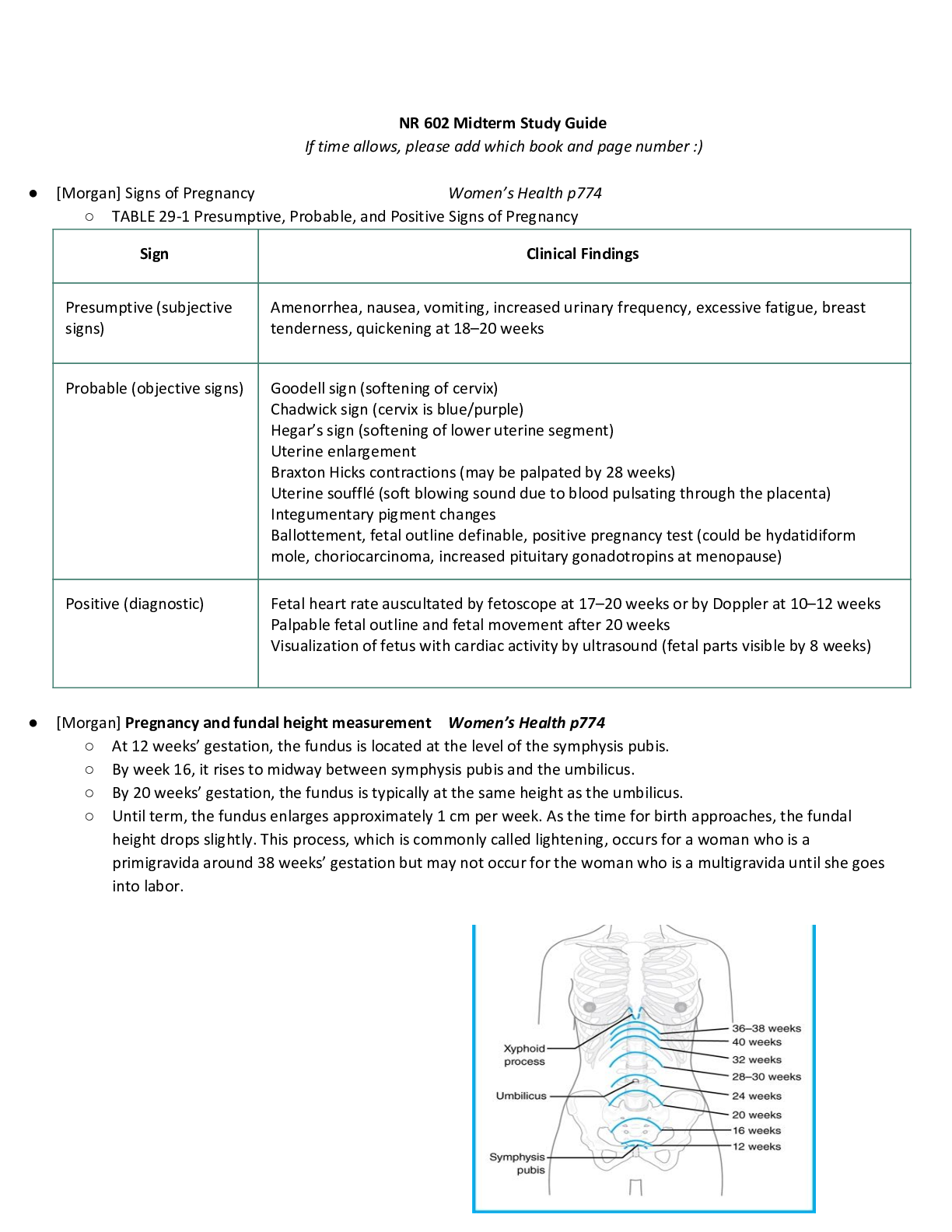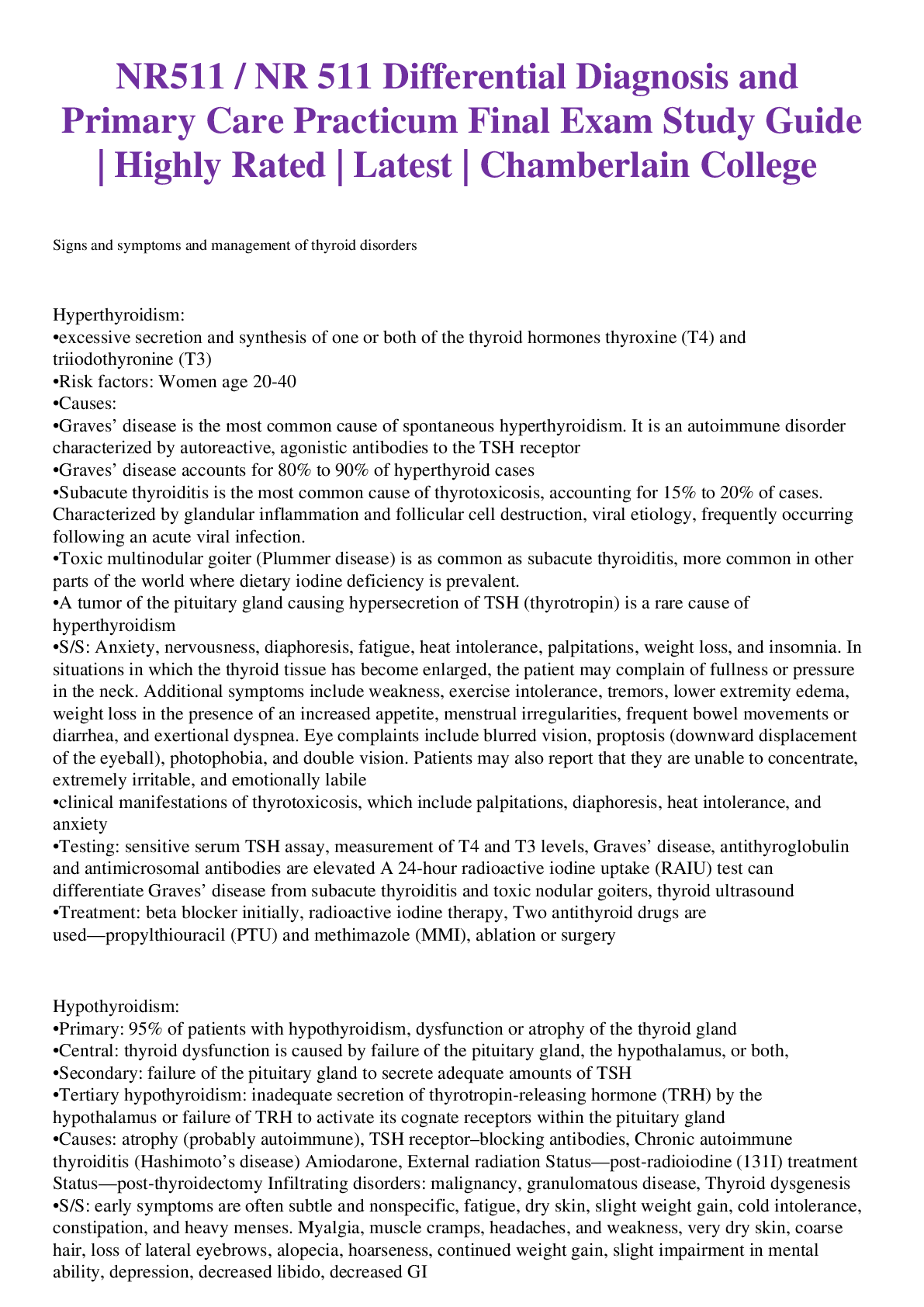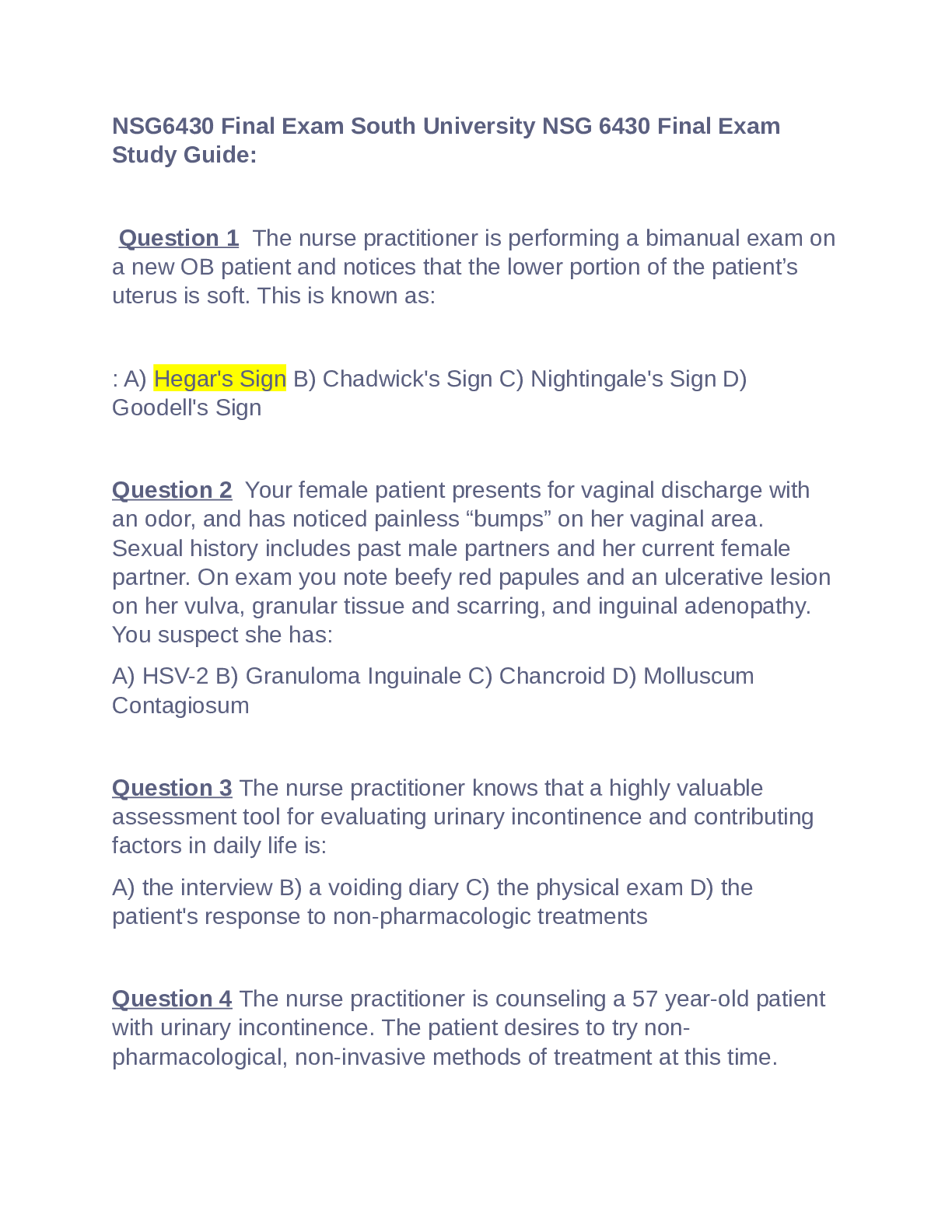*NURSING > STUDY GUIDE > NUR 631 Topic 16 Final Exam Study Guide Already Passed (All)
NUR 631 Topic 16 Final Exam Study Guide Already Passed
Document Content and Description Below
Study Guide for Midterm – Spring 2018 This study guide provides a content outline that can be used to prepare for the topic quiz. This outline may not be inclusive of all quiz content. Cellular b... iology and Alterations Compensatory hyperplasia after partial resections (mod 1) (51-53) o Ex: liver, hepatocyte growth o Adaptive mechanism that enables certain organs to regenerate o Even with removal of 70% of the liver, it will regenerate within about 2 weeks o Compensatory hyperplasia occurs in epidermal, intestinal epithelia, hepatocytes, bone marrow and fibroblasts. Some type off hyperplasia is noted in bone, cartilage and smooth muscles – Example- callus, wound healing as part of inflammation process Tumor progress from benign to malignant (364-366) o Benign tumors are usually encapsulated and well differentiated. They retain some normal tissue structure and do not invade the capsules surrounding them or spread to regional lymph nodes or distant locations. Generally named according to the tissues from which they arise, and include the suffix –oma. o Some benign tumors can progress to cancer and are then referred to as malignant. They have more rapid growth rates and specific microscopic alterations, including loss of differentiation and absence of normal tissue organization. One hallmark is anaplasia – loss of cellular differentiation, irregularities of the size and shape of the nucleus, and the loss of normal tissue structure. May present with different degrees of encapsulation; some lack a capsule, and even if one is apparent, it’s integrity has been compromised so that tumor cells can grow to invade nearby blood vessels, lymph and surrounding structures. Most deadly characteristic is their ability to spread far beyond the tissue of origin – metastasis 1 BENIGN TUMORS MALIGNANT TUMORS Grow slowly Have a well-defined capsule Are not invasive Are well differentiated; look like the tissue from which they arose Have a low miotic index; dividing cells are rare Do not metastasize Grow rapidly Are not encapsulated Invade local structures and tissues Are poorly differentiated; may not be abldetermine the tissue of orgin High miotic index; many dividing cells Can spread distantly; often through bloodvessels and lymphatics Genetics Recurrence of autosomal diseases (152-154, 155-156) o Autosomal dominant - Affected offspring are produced by the union of a normal parent with an effected heterozygous parent Affected parent can pass either a disease gene or a normal gene to his or her children Each event has a probability of 0.5, so on average half the children will be normal and half will express the disease. o Autosomal recessive – individual must be homozygous for a recessive allele to express the disease – can survive the population one generation to the next Characterized by delay of onset, incomplete penetrance, and variable expressivity – most common is cystic fibrosis Recurrence risk for the offspring of carrier parents is 25% Klinefelter’s syndrome (mod 1) (148, 156, 914) o Causes Chromosomal disorder XXY – genotype Genetically male – due to Y Male XY, female XX Random, not inherited – nondisjunction in the X chromosomes in the mother o Signs and Symptoms Both male and female sexual characteristics Decreased T more female hormones causing Less body and facial hair Gynecomastia (risk breast CA) Weak muscles and bones (osteoporosis), shy (tall, lanky, shy) Can result in decreased IQ Higher risk of AI disorders Majority - Infertility 2 o Testing Clinical Exam Chromosomal testing Hormones Immunology Rickets disease (1599-1600) o Disorder in which growing bones fails to become mineralized, resulting in “soft” bones and skeletal deformity. o Results from insufficient vitamin D, insensitivity to vitamin D, wasting of Vitamin D by the kidney, or inability to absorb Vitamin D and calcium in the gut o Most common form is x-linked hypophosphatemic rickets in industrialized nations o In US it happens in children due to lack of dietary vitamin D – can lead to early fracture or slow bone healing after fracture o Can lead to short stature, bowing of the limbs with broad, irregular growth plates, often listless and irritable with hypotonia and muscle weakness may be unable to walk without support; abnormal parietal flattening and frontal bossing occur in the skull o Normalization of calcium, phosphorus, and vitamin D levels before surgical intervention, deformity often improves when bone metabolism improves o Hypocalcemia Epstein-Barr Virus (318t, 1078-1079, 1011) o Adenovirus, herpesviruses – transmitted via saliva, disease: mono, burkitt lymphoma o Strongly associated with non-hodgkin lymphoma in children o EBV and African Burkitt Lymphoma o Etiologic agent for mono: EBV – ubiquitous, lymphotrophic, gamma-group herpesvirus accounting for approximately 85% of mono cases o Early EBV infections are usually asymptomatic and provide immunity to EBV later in life Human Herpes Virus (HHV) 8 (382, 383, 1645) o Kaposi’s Sarcoma Commonly occurs in older men but now occurs in a markedly more virulent form in immunocompromised individuals (AIDS) o Linked to several rare lymphomas o Associated with cancer in humans o Member of Herpesviridae family 3 Complement Cascade (197, 198f, 287f) o Activated by 3 pathways Classical pathway – [Show More]
Last updated: 1 year ago
Preview 1 out of 19 pages
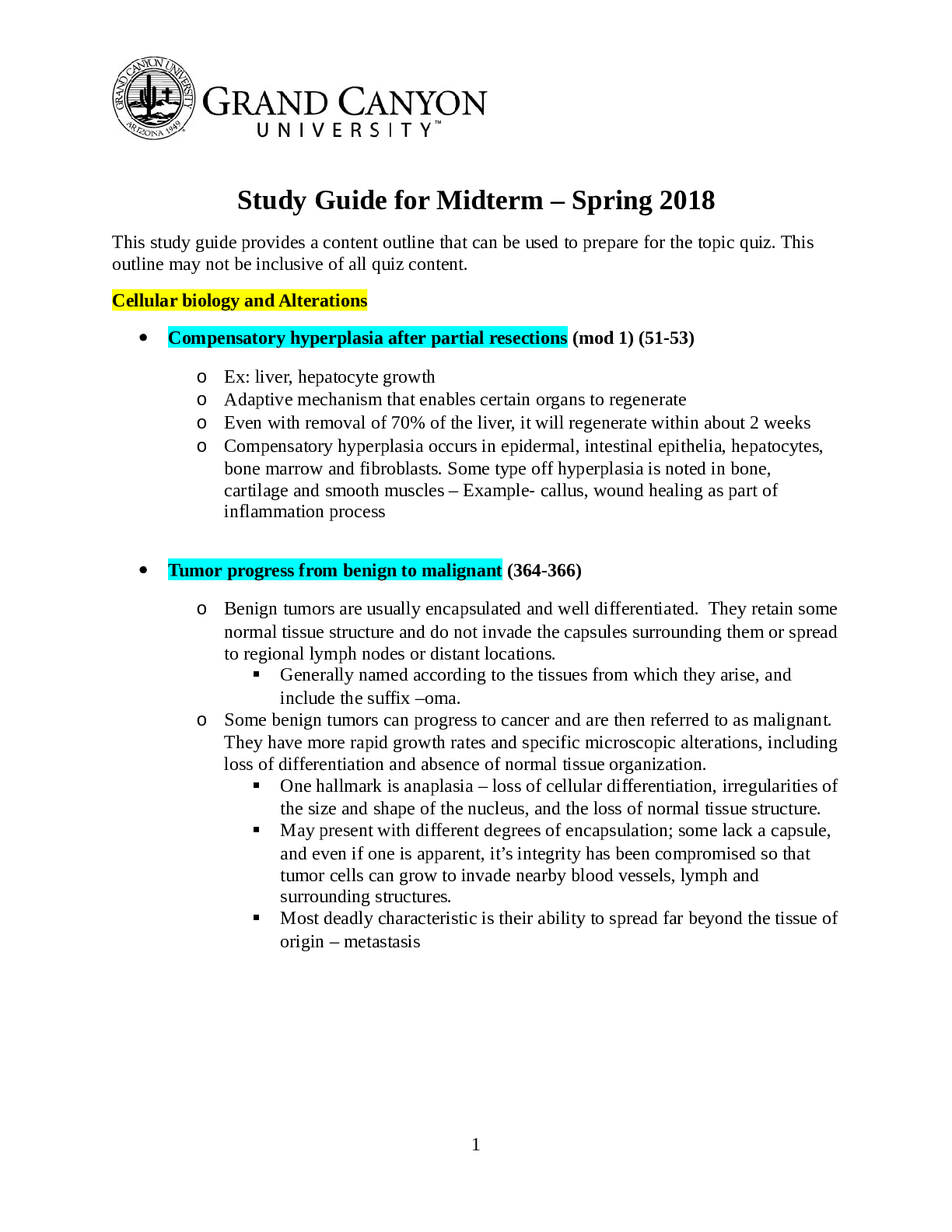
Reviews( 0 )
Document information
Connected school, study & course
About the document
Uploaded On
May 09, 2022
Number of pages
19
Written in
Additional information
This document has been written for:
Uploaded
May 09, 2022
Downloads
0
Views
58



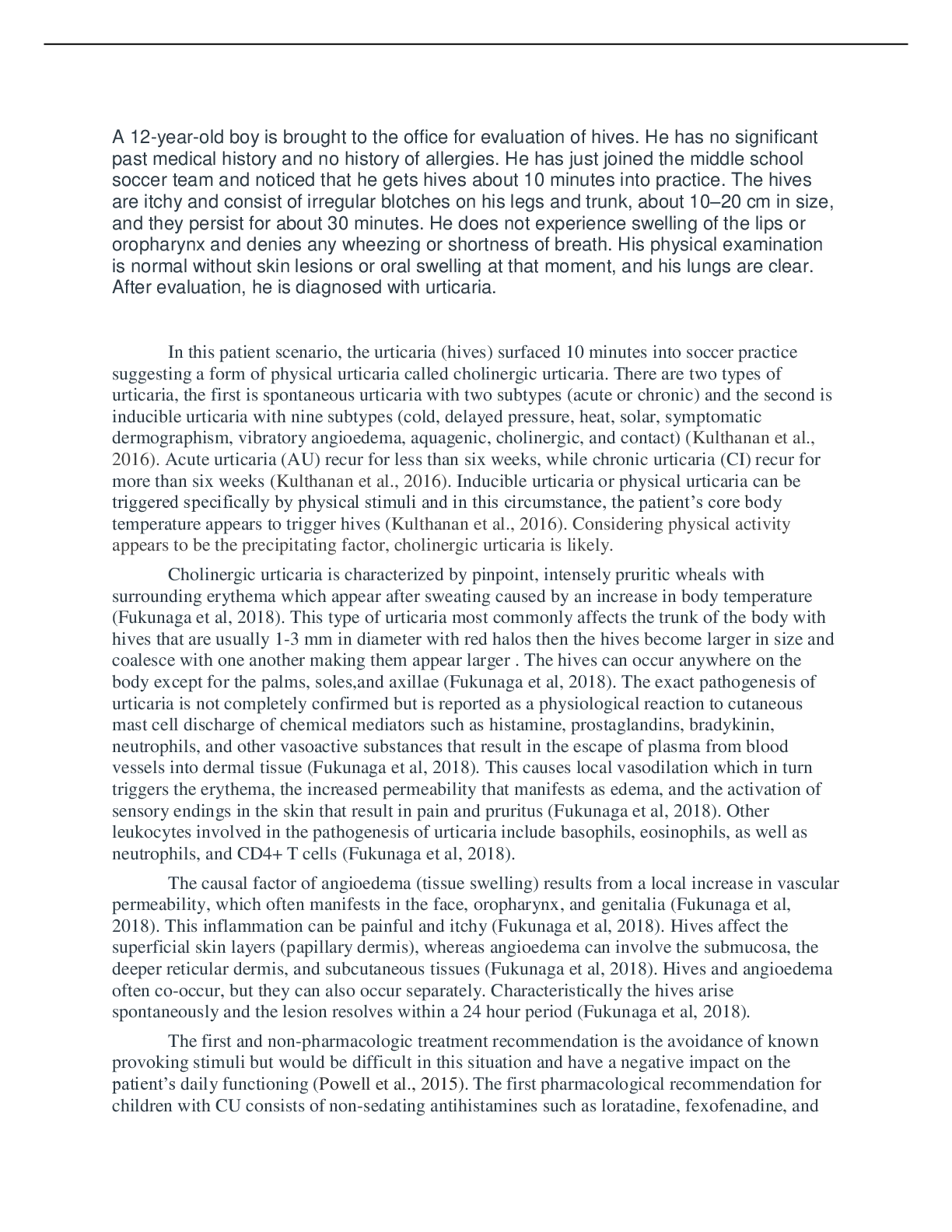
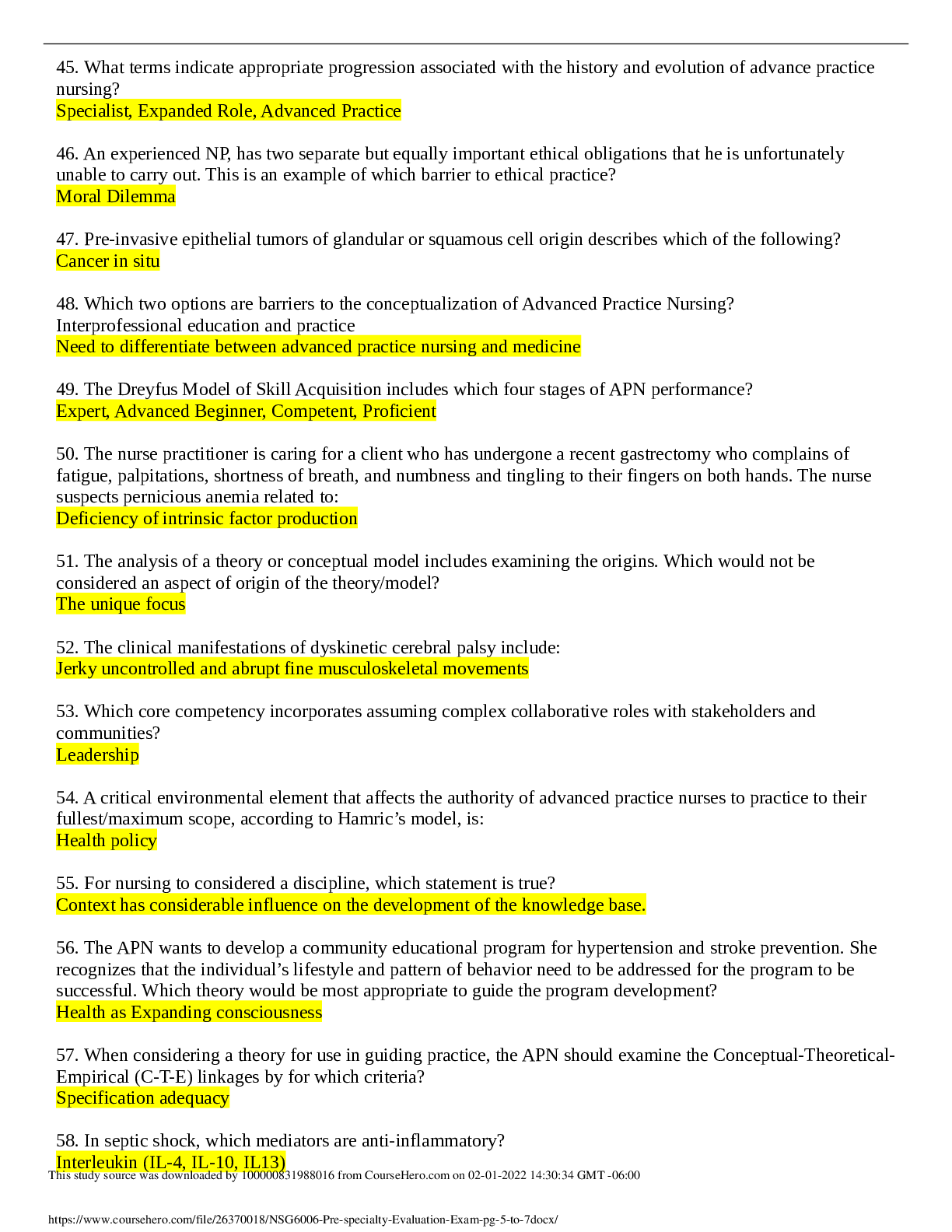





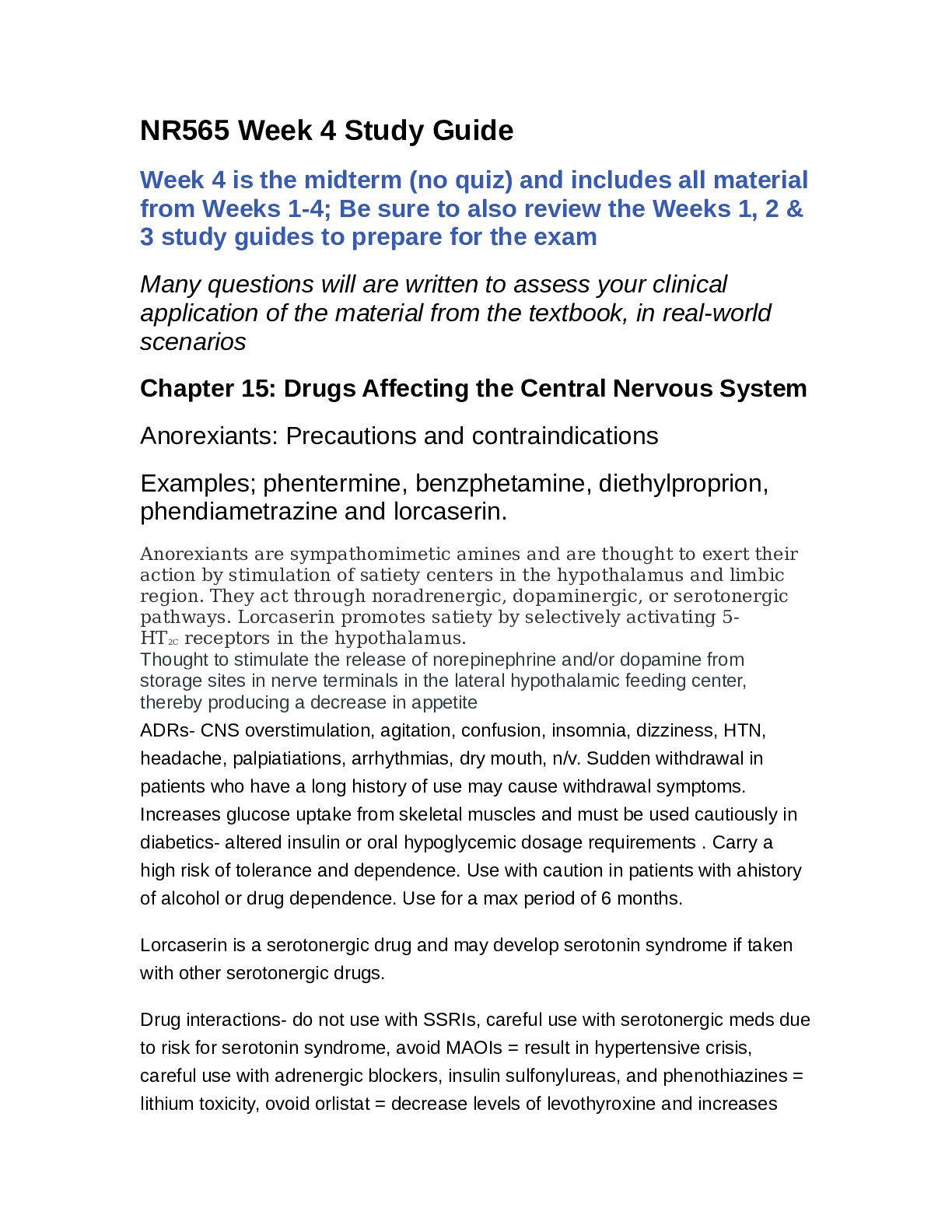
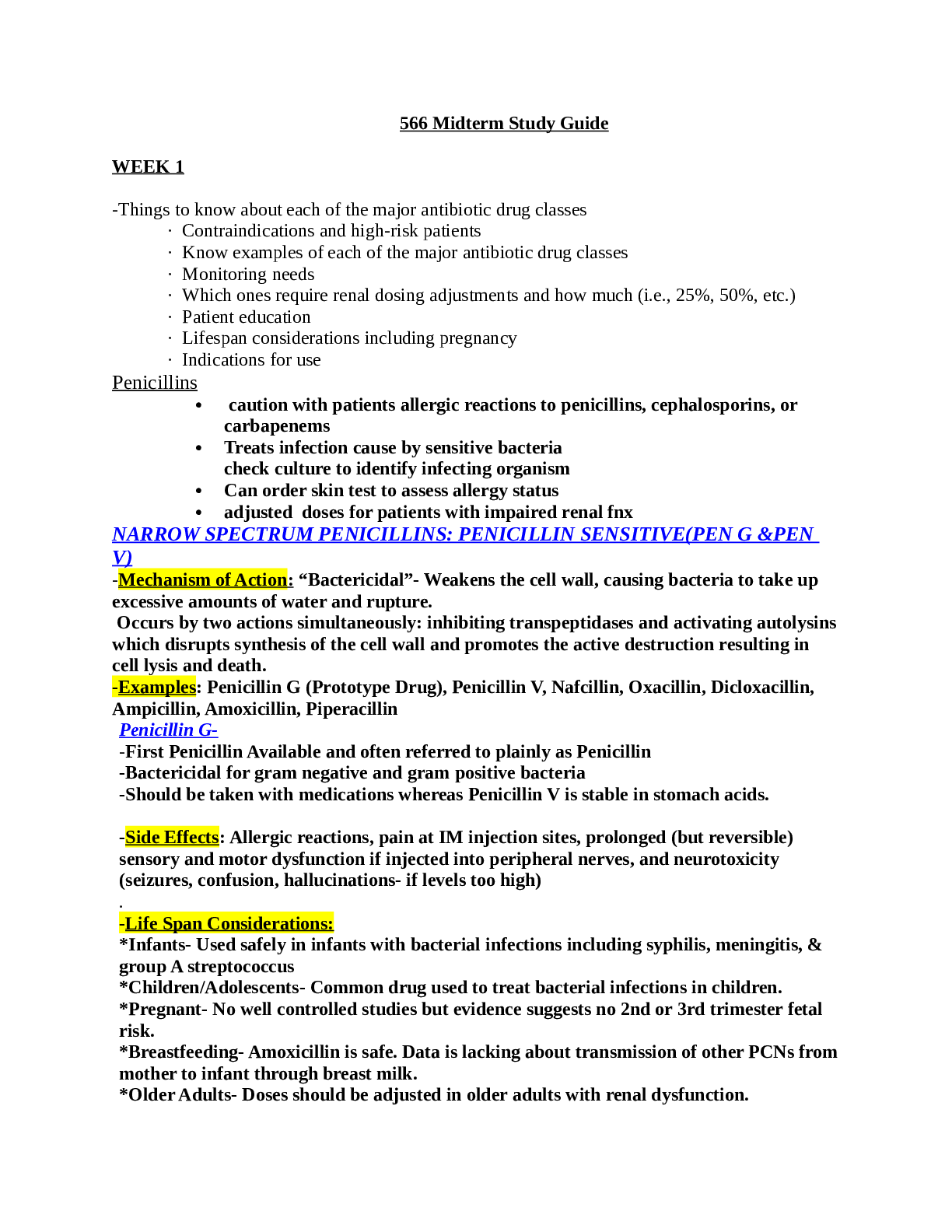


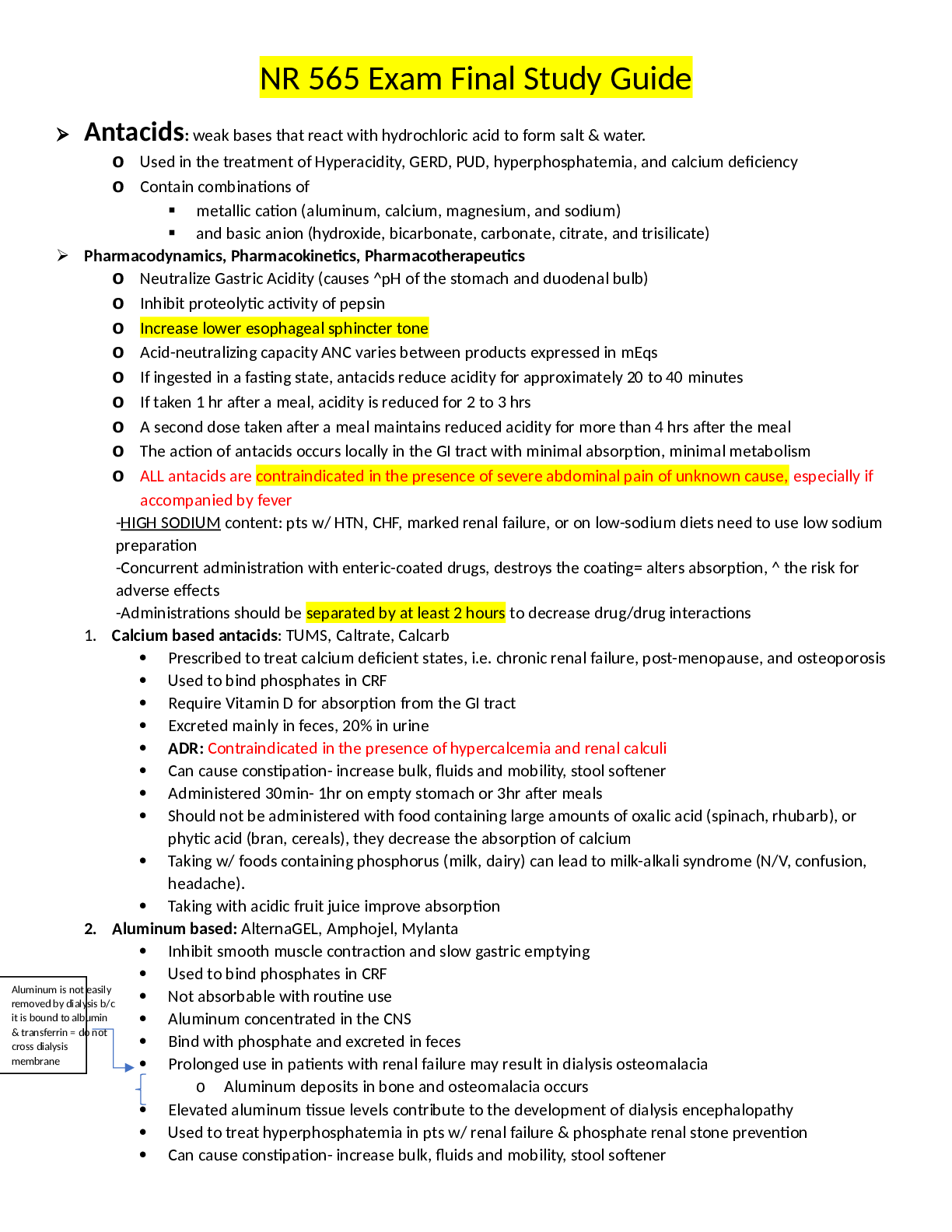
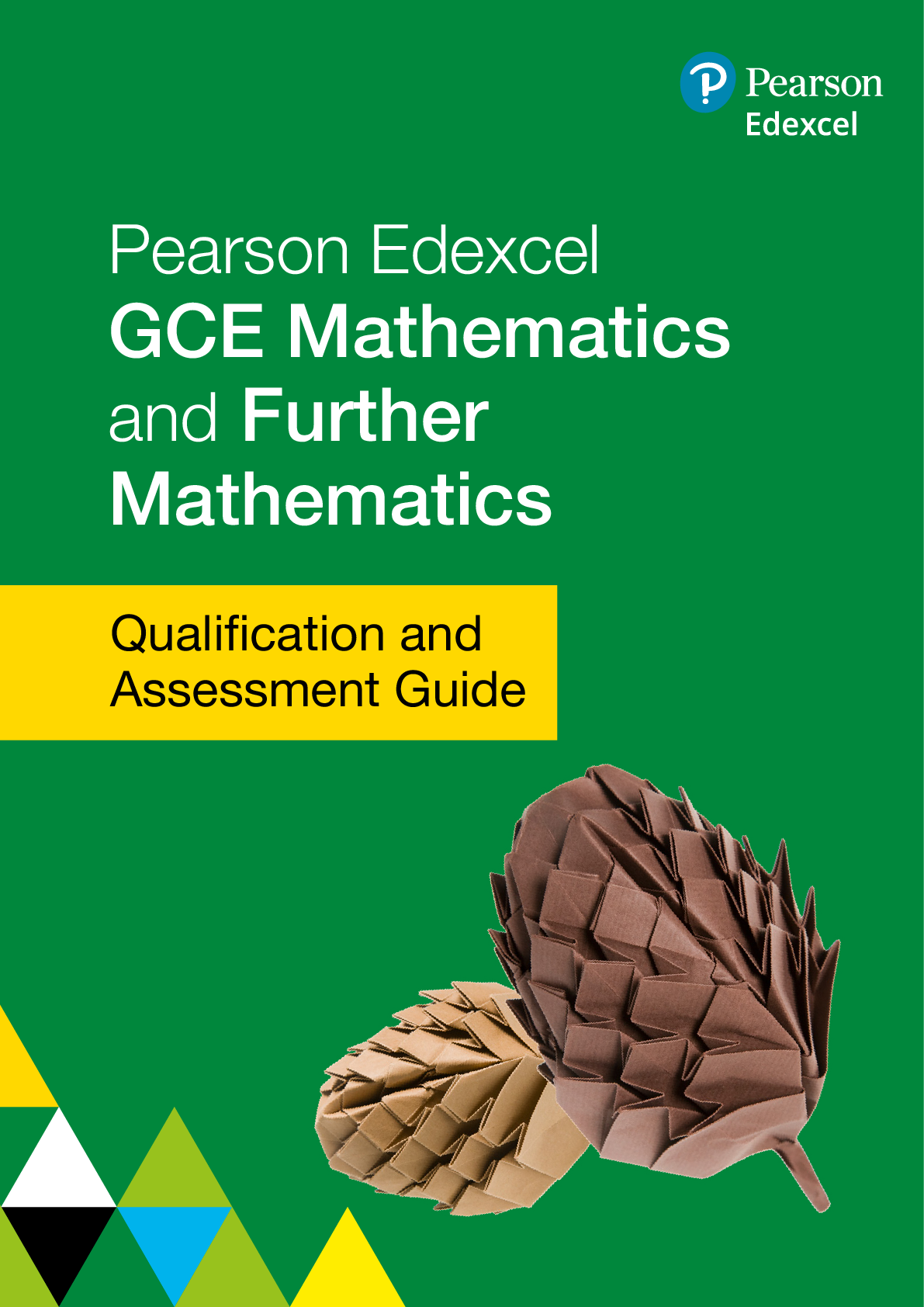




 Rasmussen College.png)
